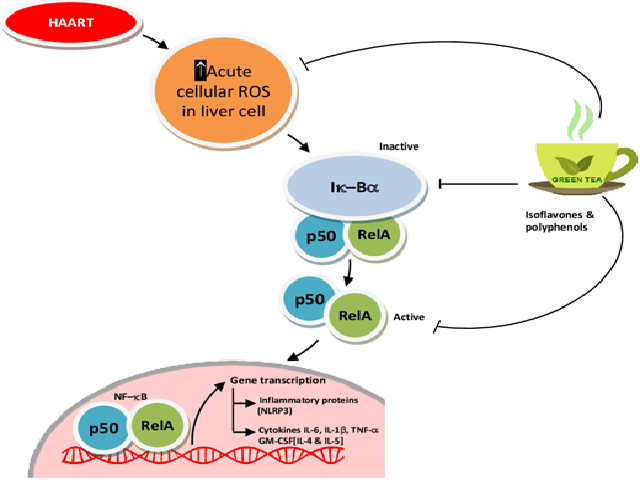Green Tea (Camellia sinensis) Ameliorate Non-alcoholic Fatty Liver Disease Induced by Highly Active Antiretroviral Therapy
DOI:
https://doi.org/10.5530/fra.2020.2.14Keywords:
Camellia sinensis, Green tea, NAFLD, Oxidative stress, TBARS, Total antioxidant capacityAbstract
Background: Highly Active Antiretroviral Therapy (HAART) has significantly enhanced the life expectancy of HIV-infected patients. However, utilization of HAART has been identified with adverse events including nonalcoholic fatty liver disease (NAFLD). Objectives: The Objective of this experiment was to explore the conceivable protective effect of green tea (Camellia sinensis) hydro-methonolic extract (GTE) on highly active antiretroviral therapy-induced NAFLD in albino Wistar rats. Methods: Thirty adult rats of comparative weights were chosen and divided into 5 groups of six rats each. Group-1 was a control group, Group II was given HAART and served as negative control, Groups III, IV and V were given HAART and 100, 200 and 400 mg/kg of GTE, respectively for sixty days. At the end of experiment day, the rats were fasted overnight sacrificed by cervical dislocation and blood was taken via cardiac puncture. Serum was separated and liver function test was assessed. Liver were excised from the rats, histopathological studies and lipid profiles were also investigated. Results: Elevated levels of serum TGL, total cholesterol, ALT, AST and liver TGL, TBARS and decreased levels of TAC was seen in HARRT treated rats. The amelioration potential of GTE was observed in a dose-dependent manner, the highest dose 400mg/kg more potently ameliorated HAART affected parameters near to the normal control. Conclusion: This consequence of HAART induced NAFLD may be due to oxidative stress by mitochondrial ROS that leads to increased hepatocellular oxidative damage. This may progress to hepatic inflammation and the development of NAFLD. The effect of GTE against NAFLD and oxidative stress might be due to its antioxidant activity and scavenging of reactive oxygen species induced by HAART.
Downloads
Metrics





